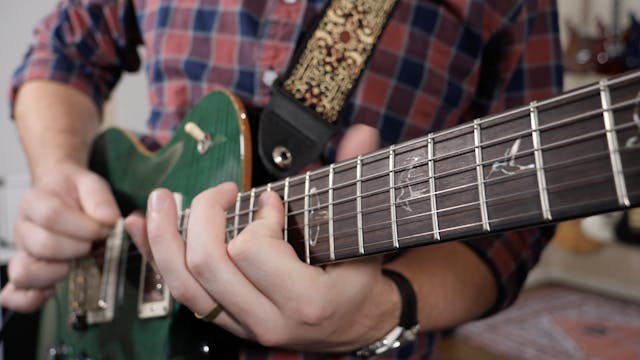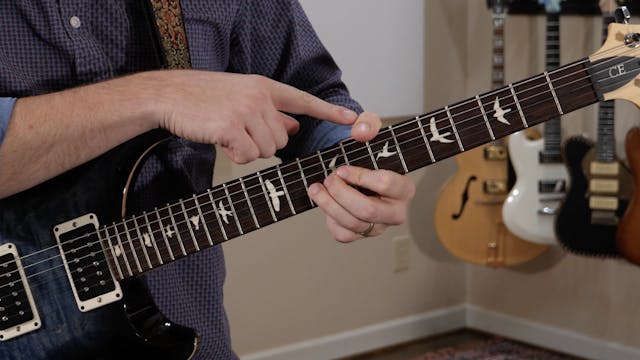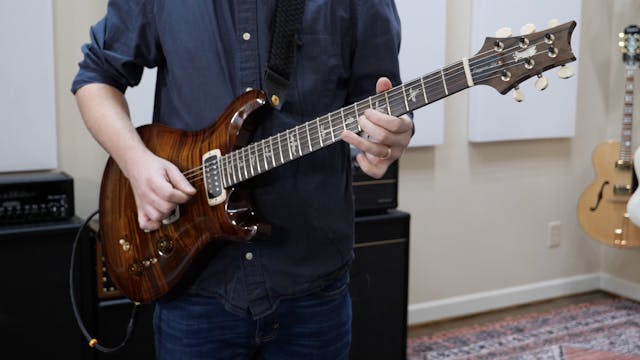The Modal Blues of Mixolydian
Blues Guitar & Beyond
•
6m 55s
Mixolydian is a great scale to use in a major blues context. It'll give your blues licks a jazzier, richer melodic voice around dominant 7th chords. You can use it in combination with the more signature sounds of the Pentatonic Scales, and you’ll see how the extra notes included in Mixolydian offer great options for newer, fresher licks.
Mixolydian works in blues because it includes all the notes that make up a dominant seventh chord, which is the chord commonly found in basic major blues chord progressions. the chord type used in most major/dominant blues progressions (e.g. G7, D7, E7).
The 1, 3, 5 and ♭7 intervals that make up a dominant seventh chord are what making Mixolydian a great fit to use when improvising.
These can be thought of as targets for your blues phrases and licks, as they connect directly to the backing chords.
The other scale intervals - the 2, 4 and 6 - can be thought of as "color tones" and can bridge the gaps between phrases. If you think of using the notes in this way and you'll never get lost when you improvise your next blues guitar solo!
Be sure to give it a try over the awesome G Mixolydian backing track from Quist, which you should explore for more backing track needs you may have!
Up Next in Blues Guitar & Beyond
-
The Modal Blues of Dorian
Much like the Mixolydian lesson, I think the best way to learn modes is to play chord vamps that capture the true sound of the mode. Each mode has a sound and when you think of the mode you need to think of the sound that it creates when you use it. This is as far into music theory as we’ll get i...
-
The Essentials of Bending & Vibrato
When you think about bending and vibrato, chances are one of your favorite guitar players comes to mind. For me, it was always Angus Young. That bend he hits during the climax of the Back in Black solo still sends shivers up my spine. No matter what kind of vibrato you like, these tips will help ...
-
Quarter-Bends & Slurs
The guitar is the most versatile instrument ever created, and a large part of that is because you have the ability to bend notes to various pitches at will. This lesson takes that capability to the next level by showing you how to actually create a new sound with string bending through a nifty li...


